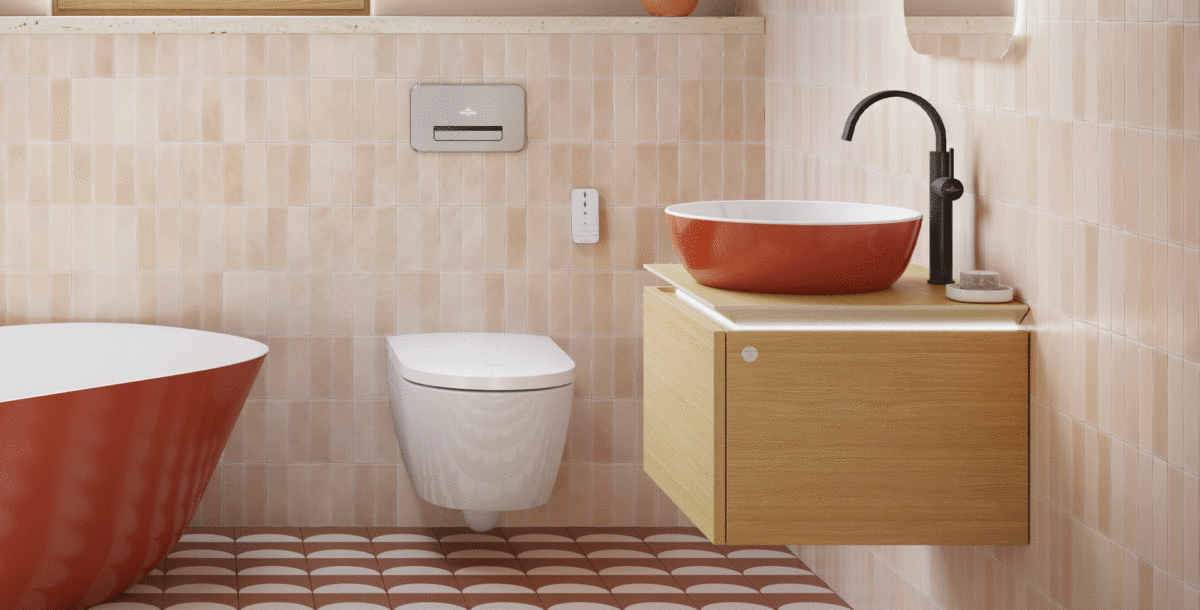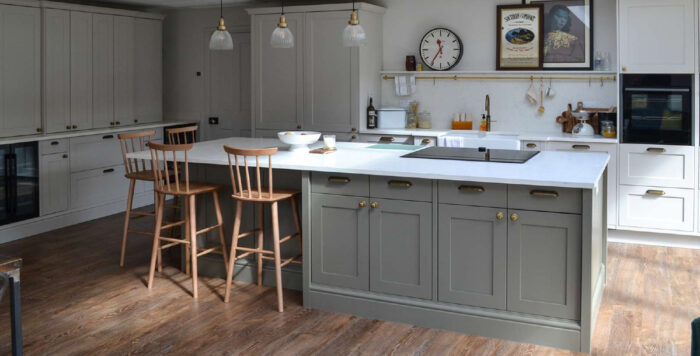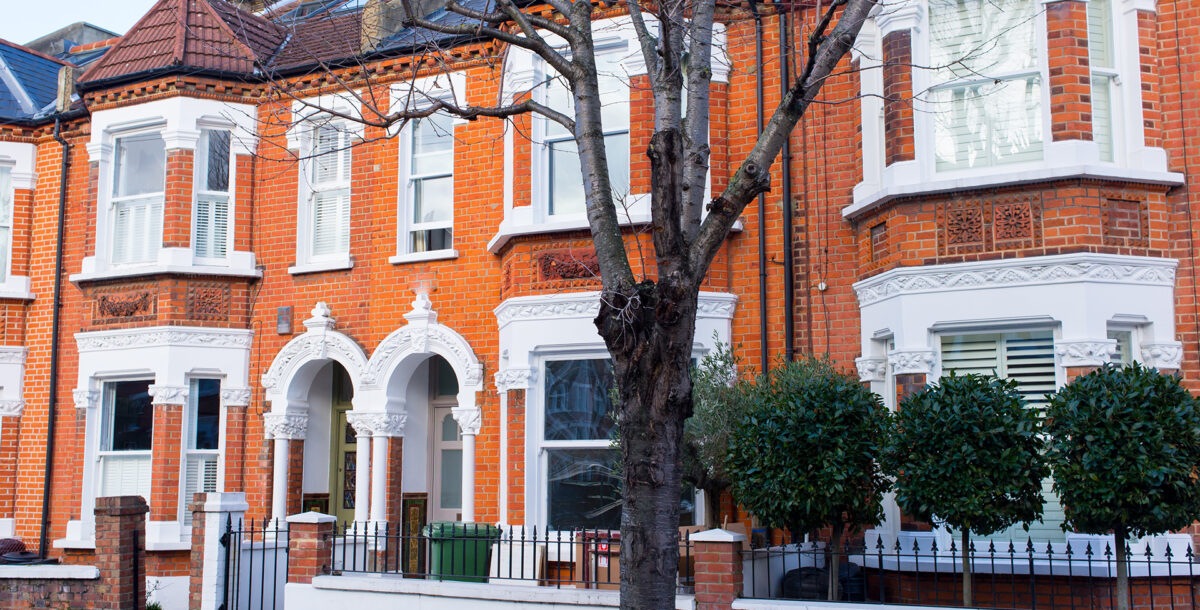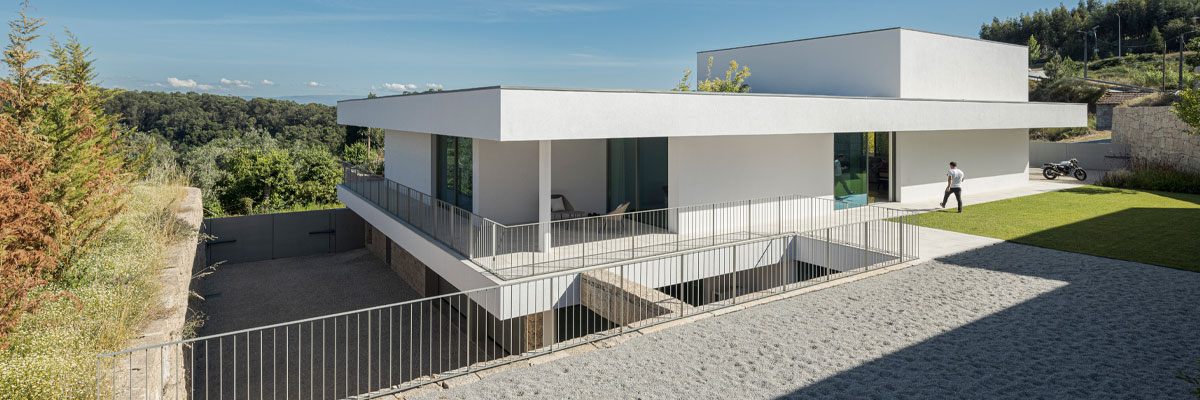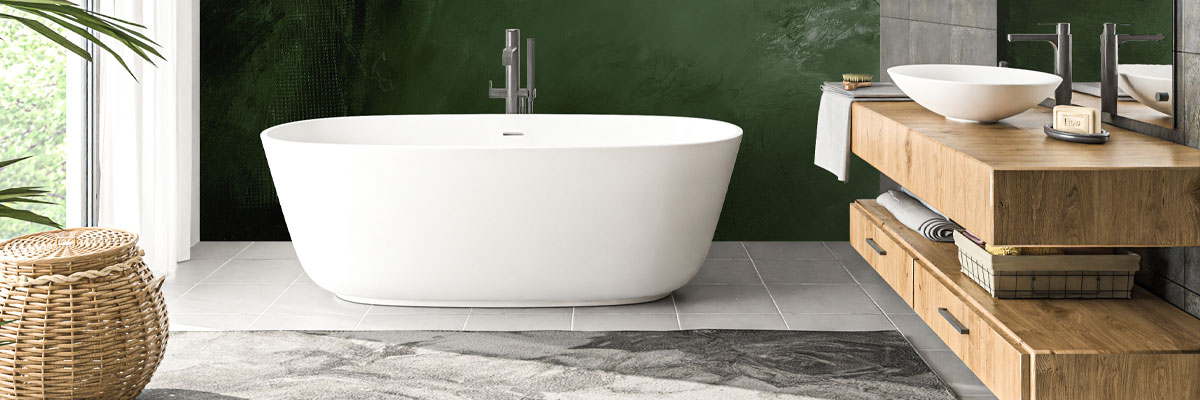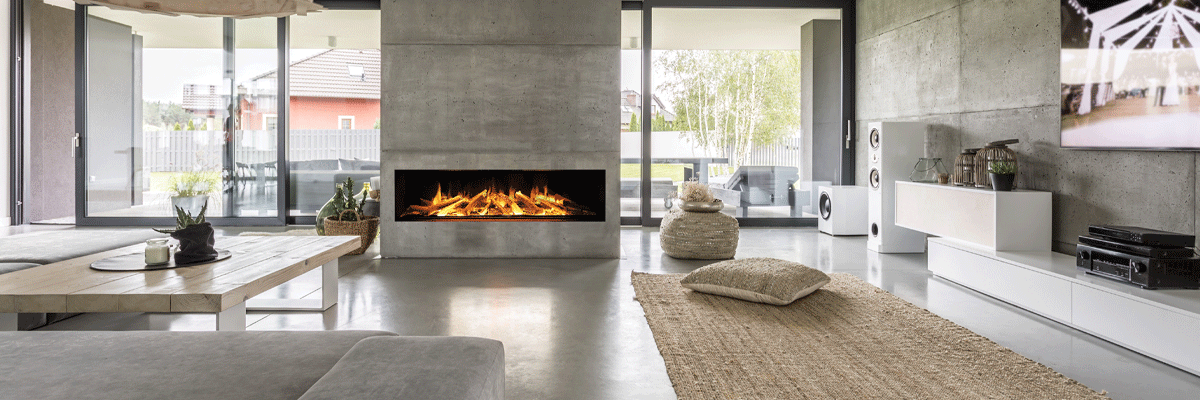Our favourite gardens at RHS Chelsea Flower Show 2024, and the stories behind them
The judges at RHS Chelsea have made their choice, but which gardens did we fall in love with? These are our top picks
The results are in and the expert panel of RHS judges has voted the Muscular Dystrophy UK – Forest Bathing Garden designed by Ula Maria as their gold-medal winning ‘best in show’ at RHS Chelsea Flower Show 2024. Having seen it in the flesh, we feel it’s a worthy winner – though we definitely have some other favourites among the painstakingly designed and constructed Show Balcony, Container and Sanctuary Gardens, not to mention the All About Plants entries.
So which gardens made the biggest impacts on us? And why? We’ve shared some of our favourites, what informed their designs and how they can inspire your own horticultural and landscaping efforts at home.
1. The Octavia Hill Garden by Blue Diamond with The National Trust
We were lucky enough to jump onto this stand, and while it didn’t make the gold-medal standard (achieving a silver-gilt medal instead), we felt this garden was packed with inspiration for urban and suburban plots. And that’s no fluke – designer Ann-Marie Powell and her team created the garden to celebrate the legacy of social pioneer and National Trust co-founder Octavia Hill (1838-1912), who fought for everyone to have access to green space.
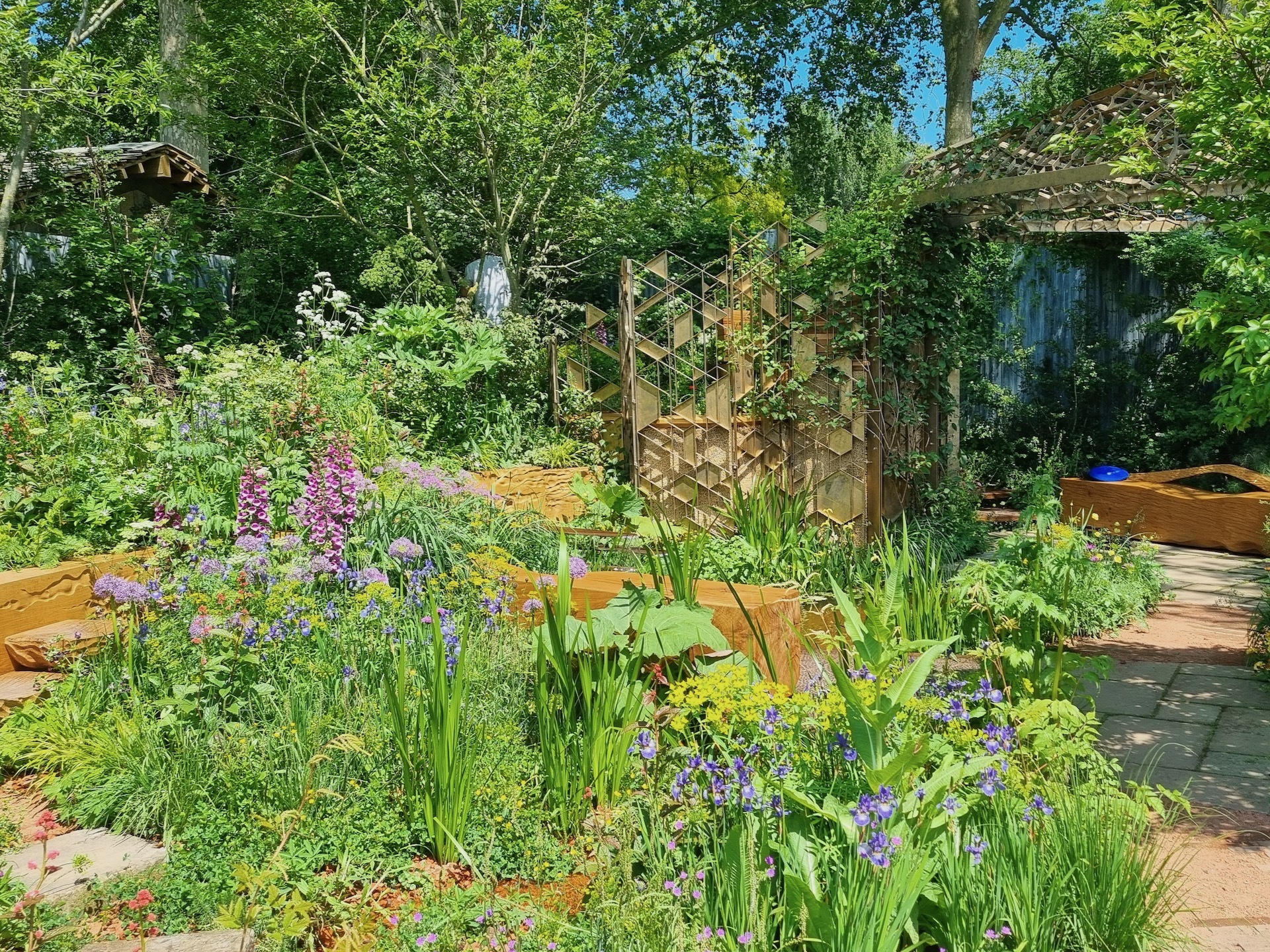
The garden, with a pathway that loops in a circle around, has designed to appeal to all five senses and is wheelchair accessible via a gently sloping path, so that people of all abilities can enjoy the space. Water features and soundscapes based on the electrical impulses of birdsong and plant impulses provide alternative experiences for the visually impaired. And hand-carved benches, made from reclaimed timber, allow visitors to sit immersed in nature.
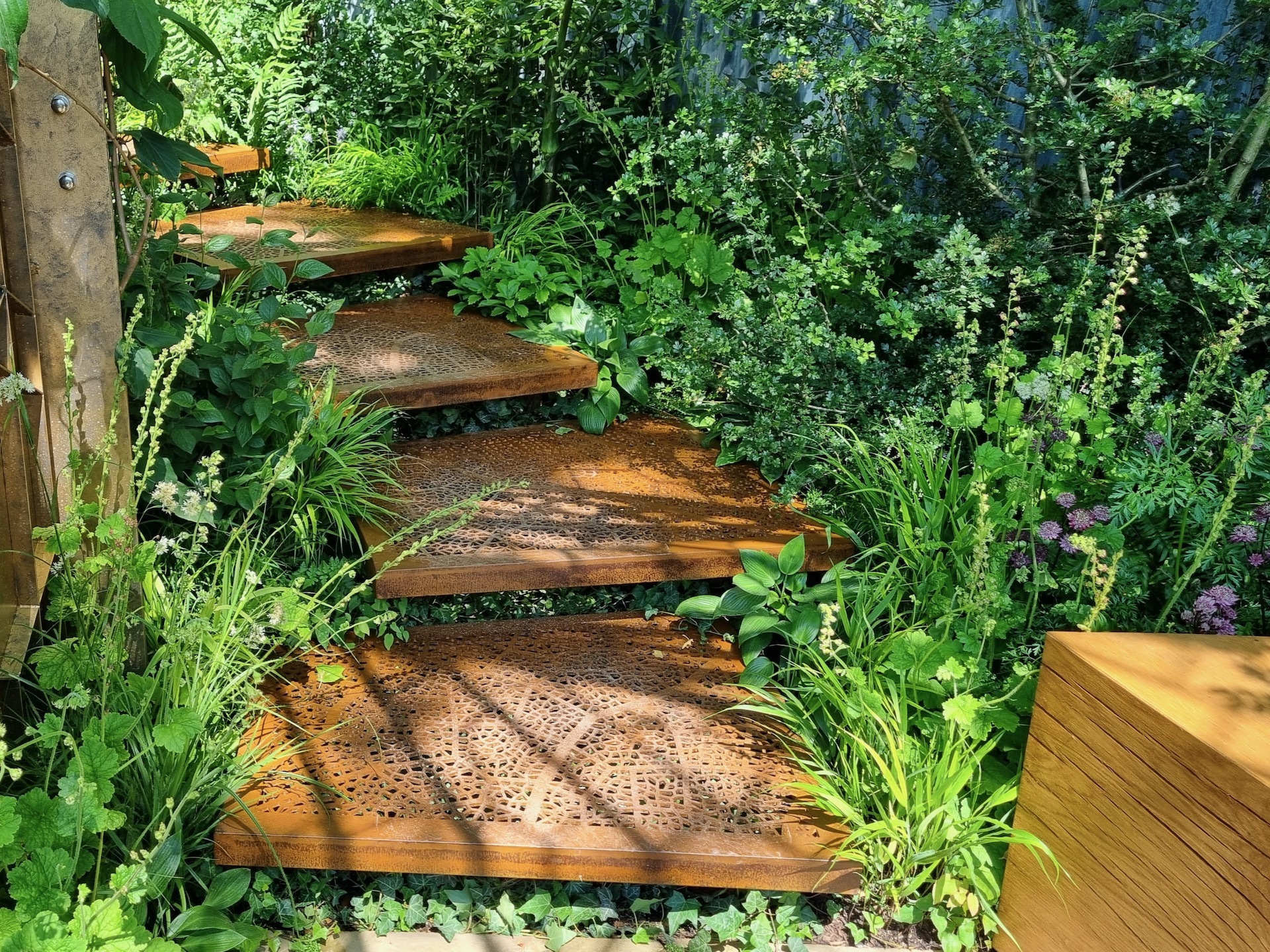
These specially designed steps, inspired by patterns found in nature, allow light to reach the plants below. Elsewhere in the garden, a pond provides a habitat for wildlife with stepping stones across. This proved a huge hit with RHS Chelsea’s primary school-aged judges, who awarded the garden the inaugural RHS Children’s Choice Award.
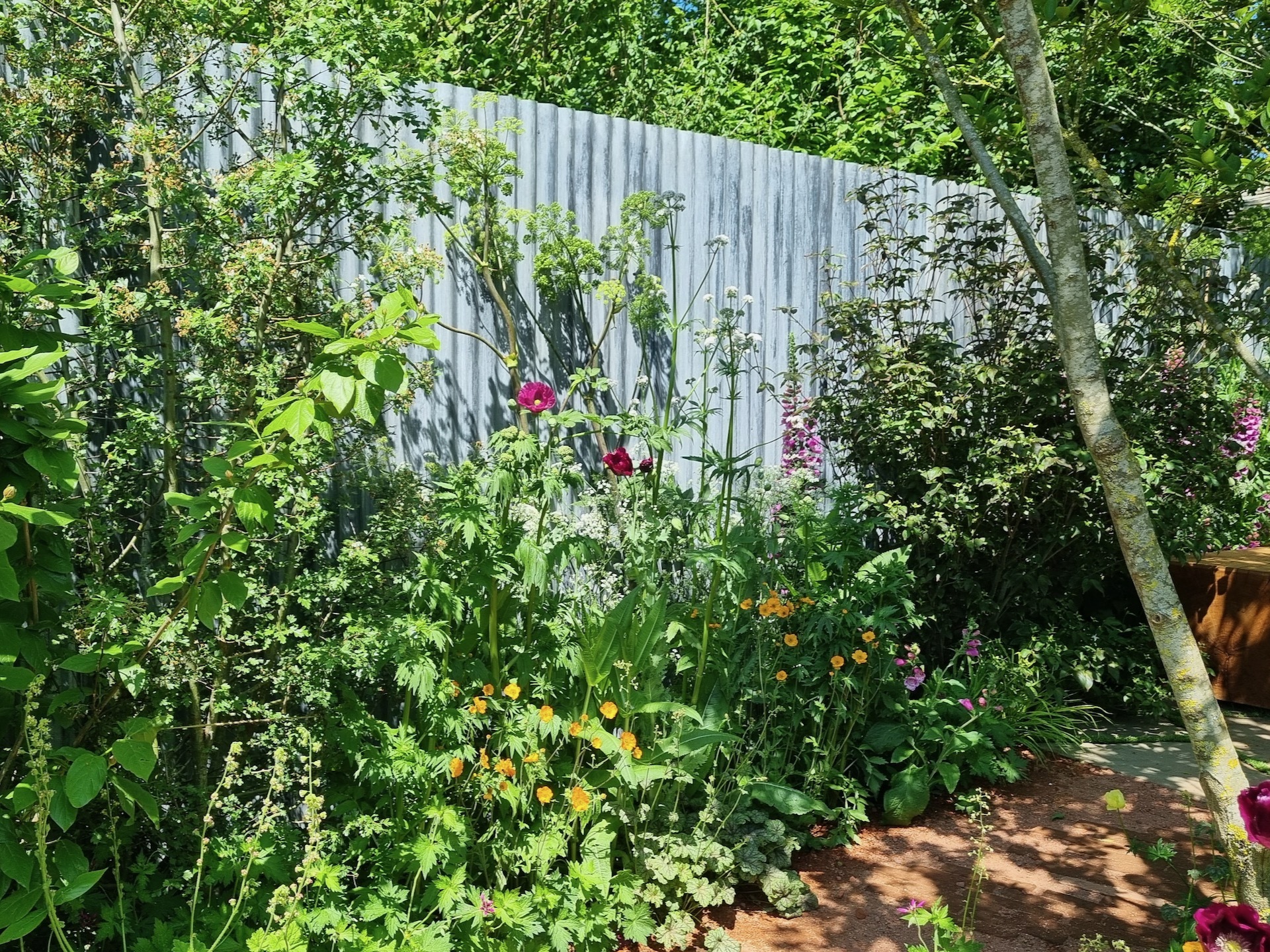
Naturalistic planting provides food for pollinators and masks the corrugated metal boundary, chosen to suggest that the garden could easily be located on the edge of a brownfield site in the city. It truly was a sanctuary among the bustle of the show, and somewhere I could have gladly spent hours of my time in one of Ann-Marie’s carefully constructed ‘outdoor sitting rooms’. I’m keen to recreate the rustic pathways – a mix of brick, sand and earth – in my own garden.
If you love the planting featured here, many of the seeds are now available through the National Trust’s partner, Blue Diamond.
2. The WaterAid Garden
You can’t help but notice the impressive conical pavilions that tower over the WaterAid Garden, which highlights ways to adapt our gardens to the extreme weather caused by climate change. It’s a truly stunning construct, providing some welcome shade not just to visitors at RHS Chelsea, but to the plants and flowers below. It catches any rain landing on the canopy, which, after feeding the plants growing there, filters down to be harvested for use in the rest of the garden.
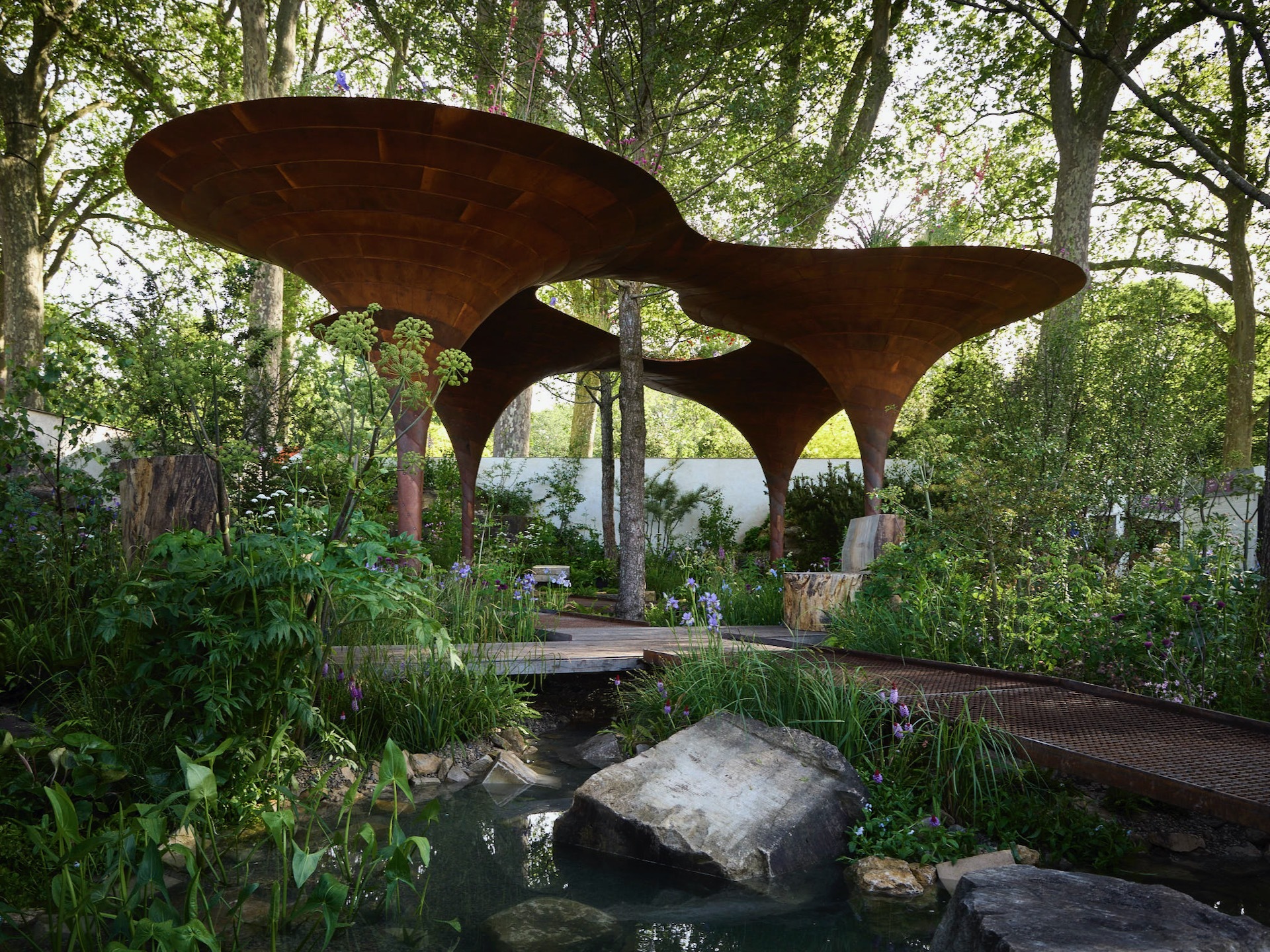
Around the garden, you’ll find a wide spectrum of plants adapted to suit weather conditions from very wet to very dry, key plants being bogbean (Menyanthes trifoliata), water violet (Hottonia palustris) and alder trees (Alnus glutinosa ‘Pyramidalis’), which have the added benefit of absorbing nitrous toxins from the soil. The fully-permeable deck below lets the water, wildlife and plants below breathe and grow.
3. Muscular Dystrophy UK – Forest Bathing Garden
RHS Chelsea’s Best in Show Garden for 2024 is a space that kept revealing more and more to us through the day. Designed by first-time RHS Chelsea designer Ula Maria, the garden was conceived as a sanctuary for those with the muscle wasting condition Muscular Dystrophy. The knapped flint wall of the garden room at the rear has a pattern that mimics muscle cells, and serves as a tool for explaining the effects of the disease.
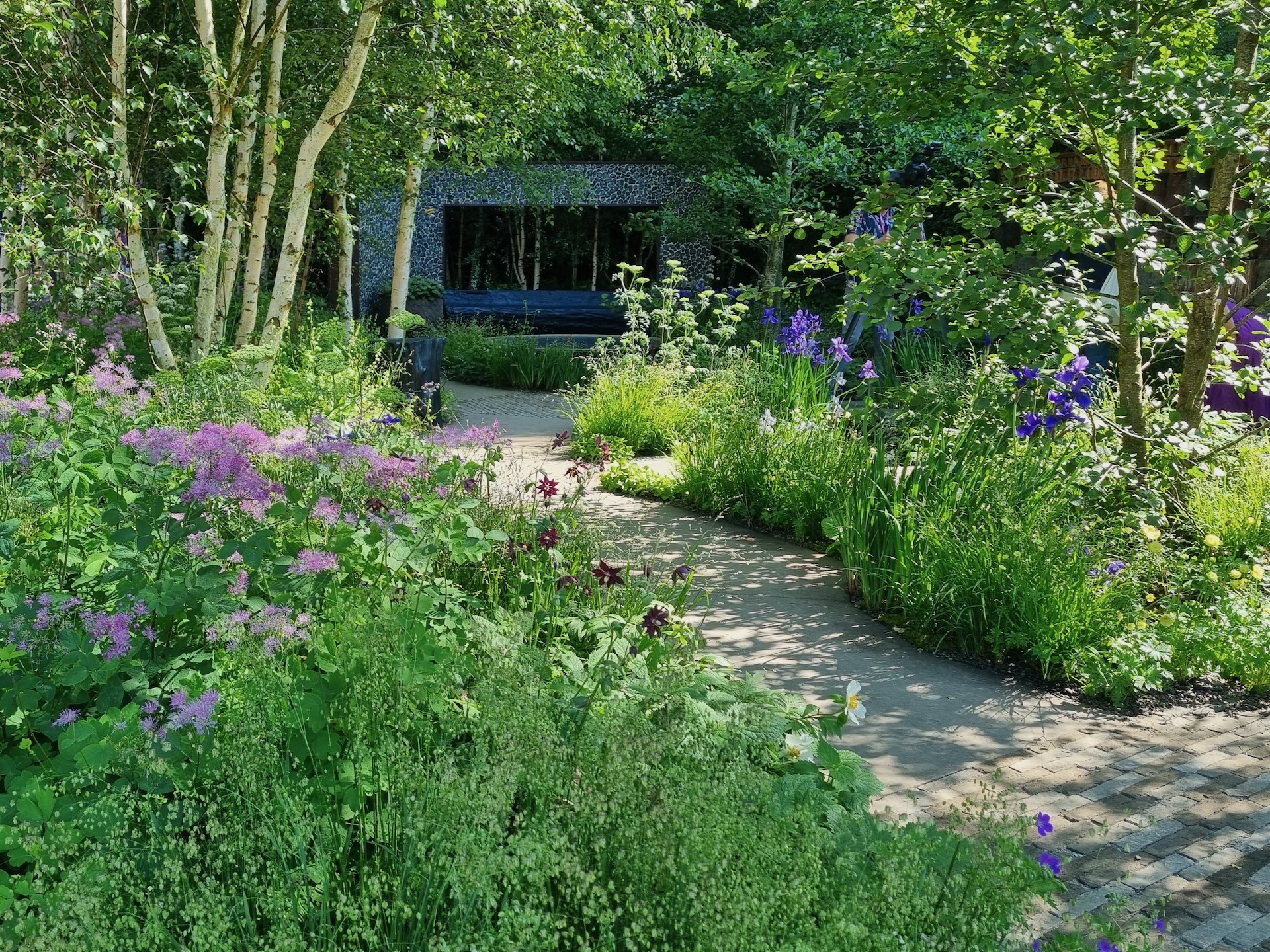
Muscular Dystrophy UK – Forest Bathing Garden at RHS Chelsea 2024. Image credit: Amy Cutmore
But the structure isn’t the star of the show – that honour goes to the 50-plus trees planted around the 10-metre wide garden. They are here so that visitors to the garden can practise the art of ‘forest bathing’, which is said to reduce stress and tension, improve blood pressure and boost the immune system. As the day went on, we were mesmerised as the dappled light moved through the trees, and we kept being drawn back to the space. It also shows that you can create a pint-sized forest in an average back garden. Your own private woodland? This garden could well be kick-starting a trend.
4. Killik & Co: ‘Money Doesn’t Grow On Trees’ Garden
Like the Octavia Hill Garden, this stunning space designed by ‘Landscape Tailor’ Baz Grainger was full of ideas that could easily translate to a suburban or urban plot. Its theme is money – or rather, ‘how families attempt to navigate their finances in an increasingly thorny landscape’. With that in mind, there are various seating areas – a large dining area for family celebrations that signifies why you may want to plan for the future, and smaller seating areas to have one-to-one difficult conversations. Meanwhile, raised beds with young plants represent how small savings grow.
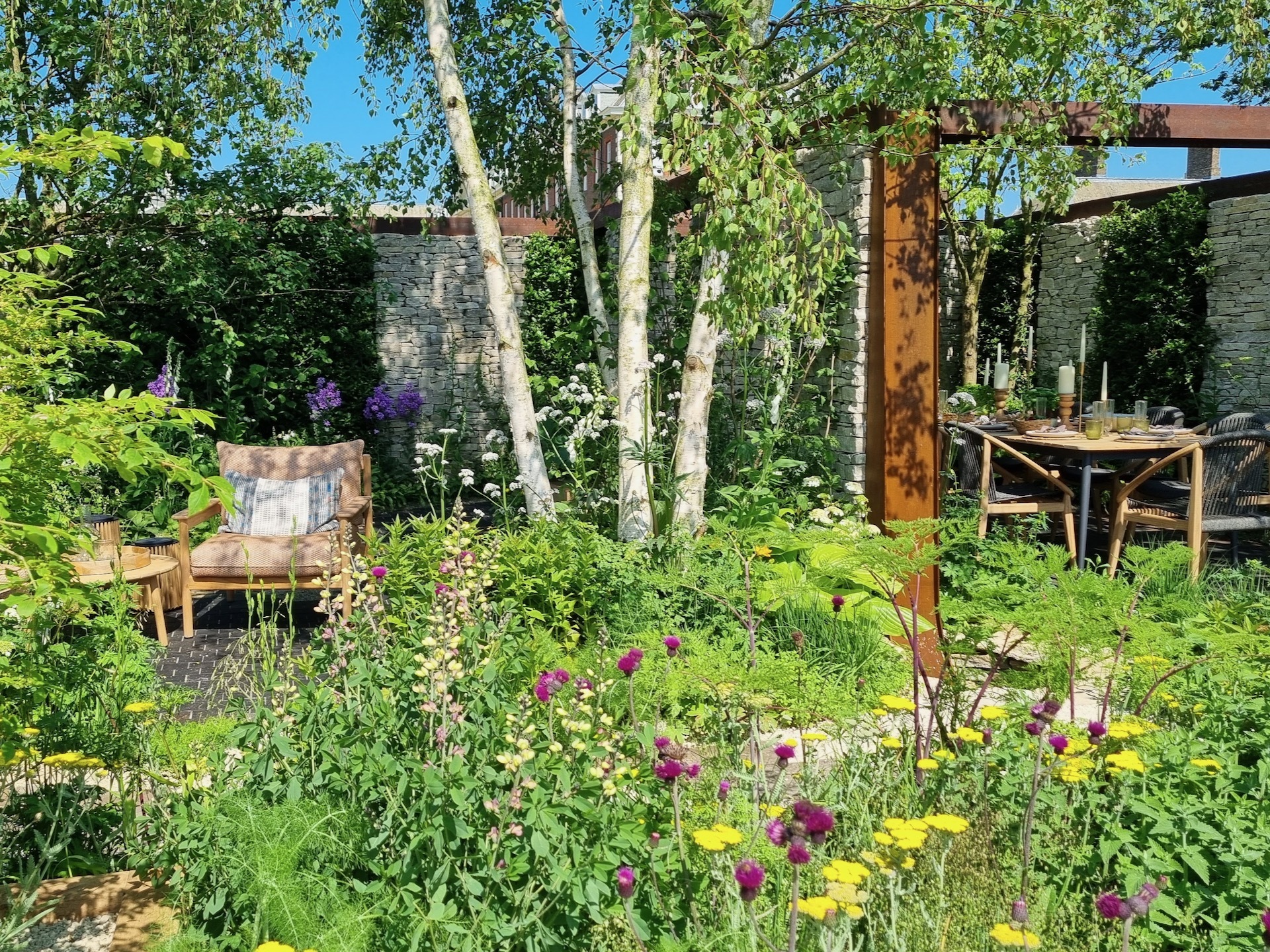
Killik & Co: ‘Money Doesn’t Grow On Trees’ Garden at RHS Chelsea 2024. Image credit: Amy Cutmore
We particularly loved the outdoor dining area in steel and stone, and the planting in a soothing pastel palette informed by colour therapy to reduce anxiety – particularly the blue flax (Linum perenne) and Amazing Grey poppies (Papaver rhoeas). These were mixed in with medicinal herbs, including mint, rosemary and fennel.

Again trees provides a cosseting canopy – among them silver birch (Betula pendula) and field maple (Acer campestre). The stonework and paving feels Mediterranean (perhaps due to the fact that it was a glorious sunny day) and sophisticated. It’s a look we’d love to try in our gardens.
5. The Anywhere Courtyard
RHS Chelsea’s Balcony & Container Gardens are some of the hardest working on the entire showground, showing that magical things are possible in even the smallest space. And none more so in our eyes than the Anywhere Courtyard – a Silver Gilt medal winner designed by another first-time RHS Chelsea designer, Elisabeth Wright-McCalla of Botanical Spaces. This adorable garden demonstrates just what can be done with an unloved concrete plot, with raised beds that double as seat backs, and a vertical fern-filled living plant wall, provided by Living Walls UK, with a soothing water feature running down and beneath it.
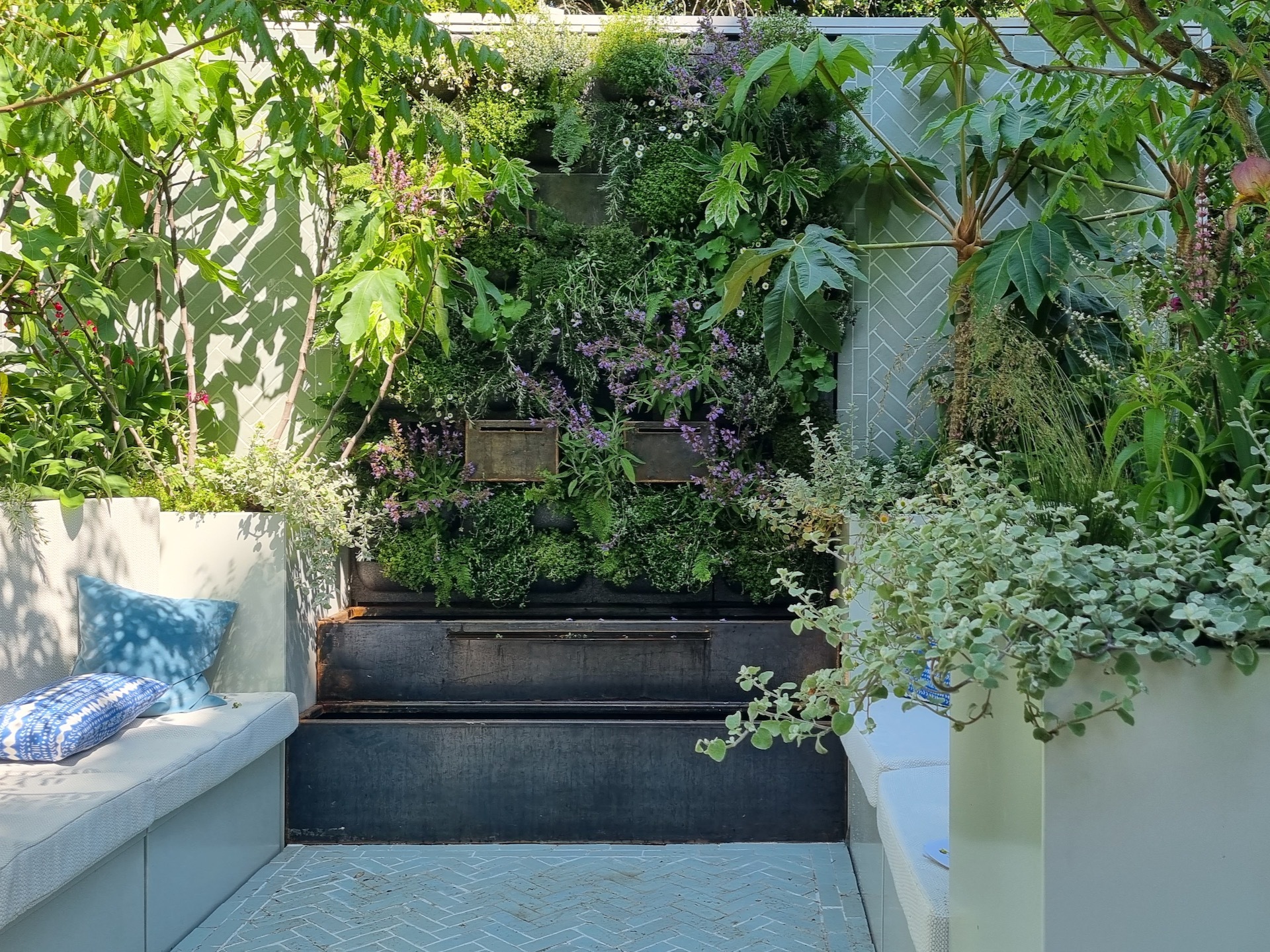
There are so many lovely details to admire here – we enjoyed the use of metro tiles on the walls and floor, and the built-in storage drawers beneath the symmetrical benches. Small trees – the Pride of India (Koelreuteria paniculata) – make the space feel more intimate, and Elisabeth has used salvia, irises and agapanthus to add colour.
6. The Glasshouse Effect
There’s no doubt house plants are having a moment – and RHS Chelsea has duly recognised this with seven House Plant Studios at this year’s show. While all charming, one in particular caught our eye, called The Glasshouse Effect. This social enterprise aims to rehabilitate prisoners, giving them a chance to learn new skills and discover a new life after release through horticulture.
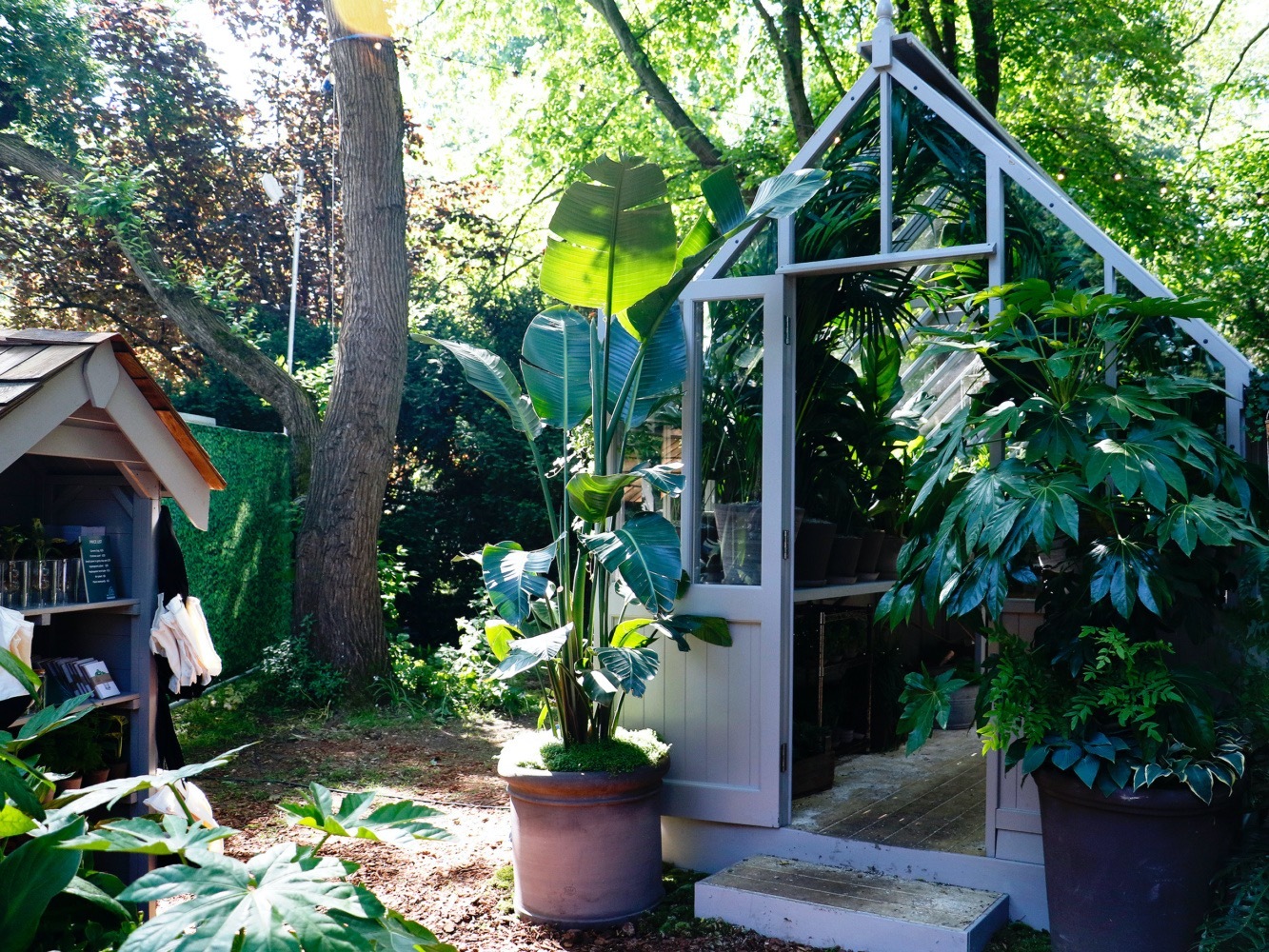
The Glasshouse programme was founded in 2020 by Melissa Murdoch and Kali Hamerton-Stove, when they discovered greenhouses in HMP East Sutton Park were sat unused. This moving gold-medal winning installation aims to recreate that first growing space, with different areas symbolic of the women’s journey through the programme.
For example, there’s a plant ‘sick bay’ where experimental seedlings and poorly specimens are given a second chance at rehabilitation, while cages in the trees outside represent the women who have come to work for The Glasshouse after release, serving as trainers, mentors and leaders, and feature their favourite plants.
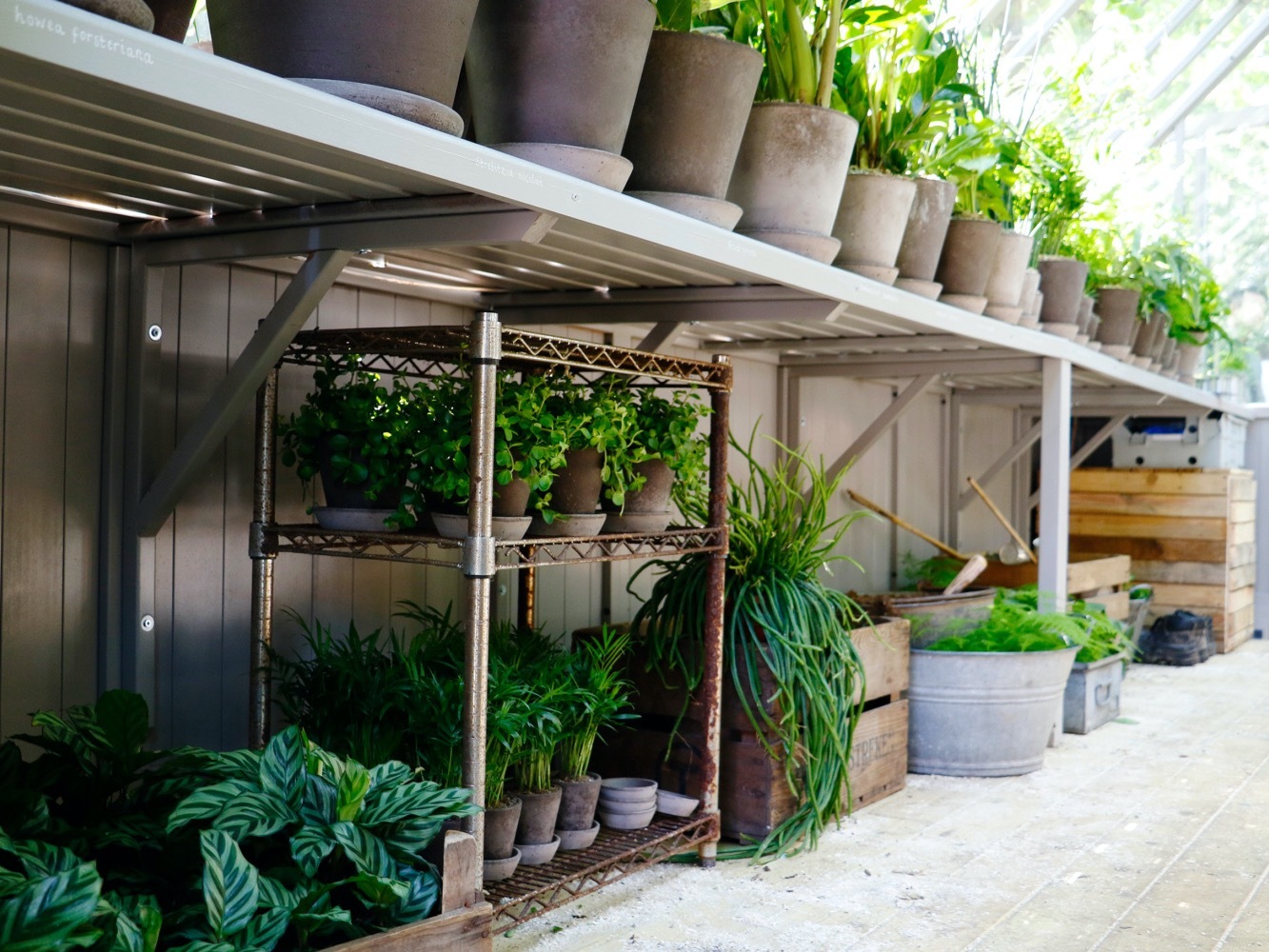
And there is, of course, a huge display of thriving houseplants, potted in the project’s signature grey pots, representing the impressive growth and togetherness of all those involved. It’s a wonderful demonstration of the power and healing nature of plants, and is well deserving of its gold medal exhibitor status.
7. The Ecotherapy Garden
Back to our charming Balcony and Container Gardens now, and we had to give a special shout out to The Ecotherapy Garden by Tom Bannister. Voted best in show in its category, this mini marvel drew us in with its inviting plunge pool, trickling water feature and lush planting.
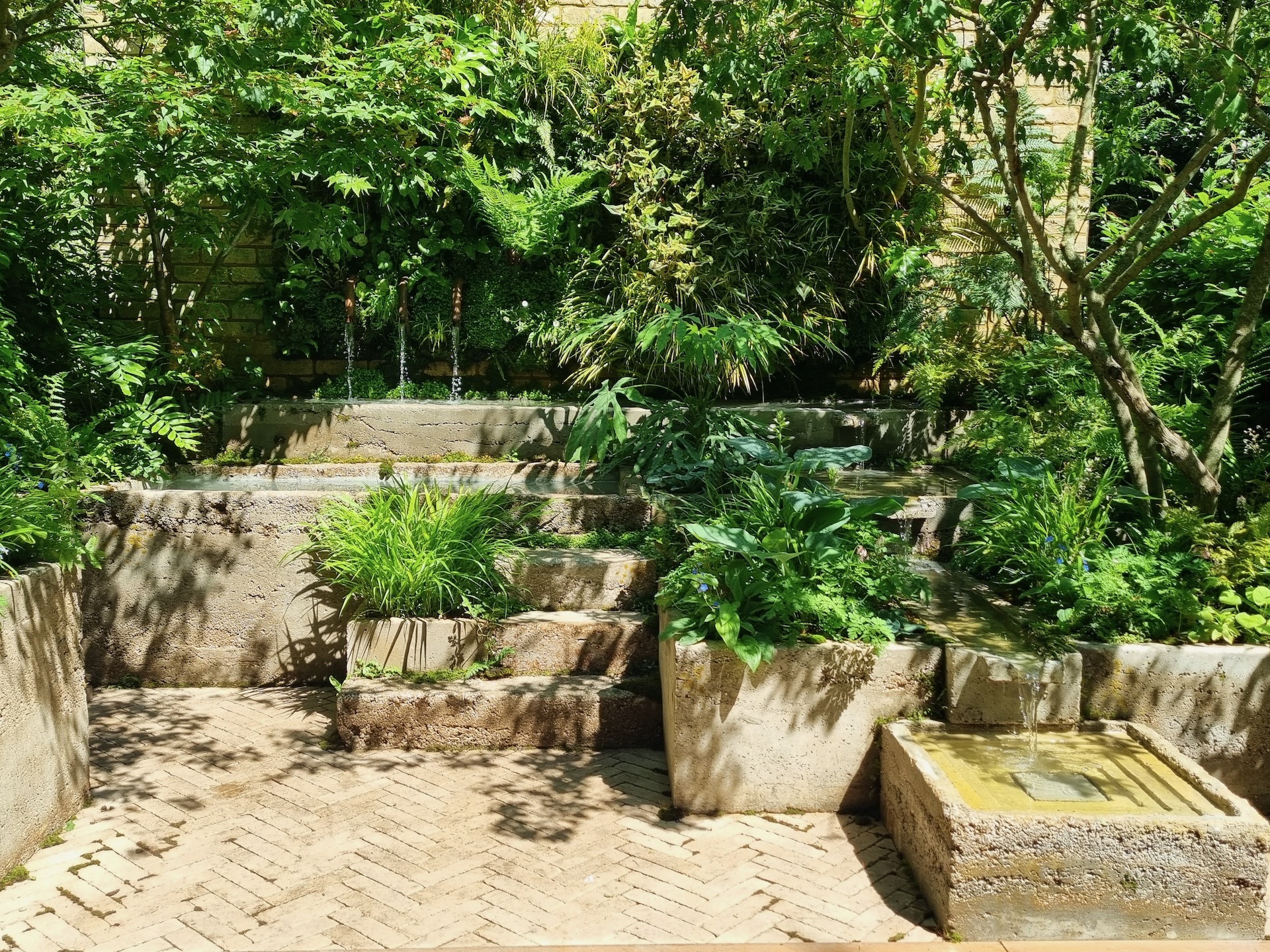
Designed to evoke a small courtyard garden, perhaps behind a London mews house or terrace, the garden has a Thames yellow brick wall. But it then shows exactly what you can do to turn a tight space into a sanctuary by way of handmade containers in a eco-conscious blend of Perlite, coconut coir, and cement. They should last for more than 30 years, whatever weather conditions are thrown at them.

Tom explains that the garden promotes the “healing benefits of cold water therapy and the grounding ability that nature so naturally provides, regardless of how small the area may be”. His star plant must be the multistem acer (Acer tataricum subsp. ginnala) that provides a shading canopy, and we’re told will turn a striking burnt orange in autumn. We think it’s the perfect tree for any small garden.
8. No Adults Allowed Garden
When we were kids, we would have dreamed of creating our own grown-up-free garden with climbing frames and dens galore. So we envy the lucky students at Sulivan Primary School in Fulham, who got to work with garden designer Harry Holding to design their dream landscape – RHS Chelsea’s first kids-only garden.
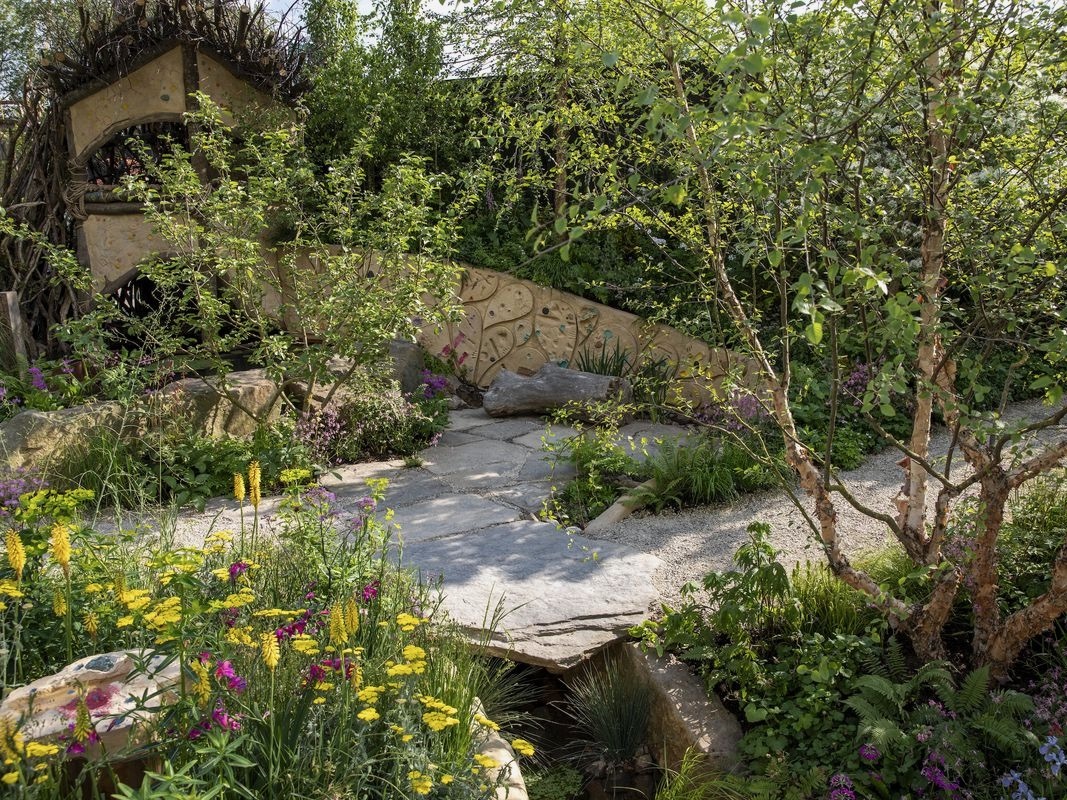
The star feature must be a subterranean den set in a pool of water, accessed by a slide. But there are also boulders to scramble over, a stream to splash around in, a look-out point, and some exciting planting, including carnivorous Sarracenia that feast on flies. Could it persuade you to give up a corner of your garden to your kids, and see what designs they dream up?
9. The Pulp Friction Growing Skills Garden
Last but not least is a garden that really touched our hearts. It’s a real community effort supporting the work of Pulp Friction CIC – an amazing organisation offering people with learning disabilities and autism an opportunity to get into work. The enterprise was founded in 2009 by Jill Carter MBE and her daughter Jessie, and their single smoothie bike, which they would take to different events across Nottinghamshire. It now offers catering and gardening opportunities across Nottinghamshire, promoting healthy eating for all along the way.
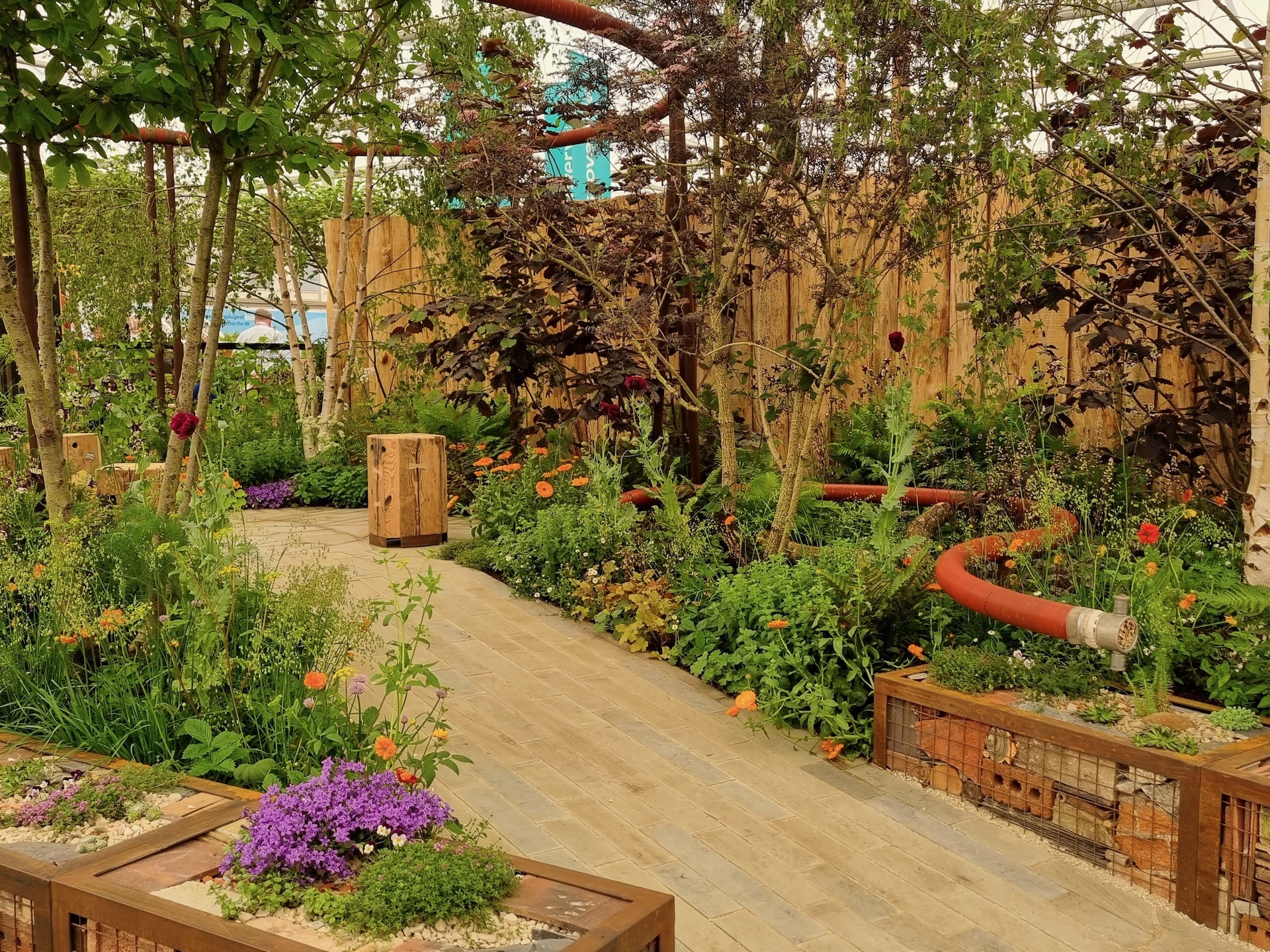
Its designers, Will Dutch and Tin-Tin Azure-Marxen of Dutch Landscape Architects, have been inspired by the centrifugal force of that first bike in their design. The planting is mostly edible, with around a third grown by Pulp Friction members, including runner beans, herbs, marigolds and succulents that feature in the paths and gabions.
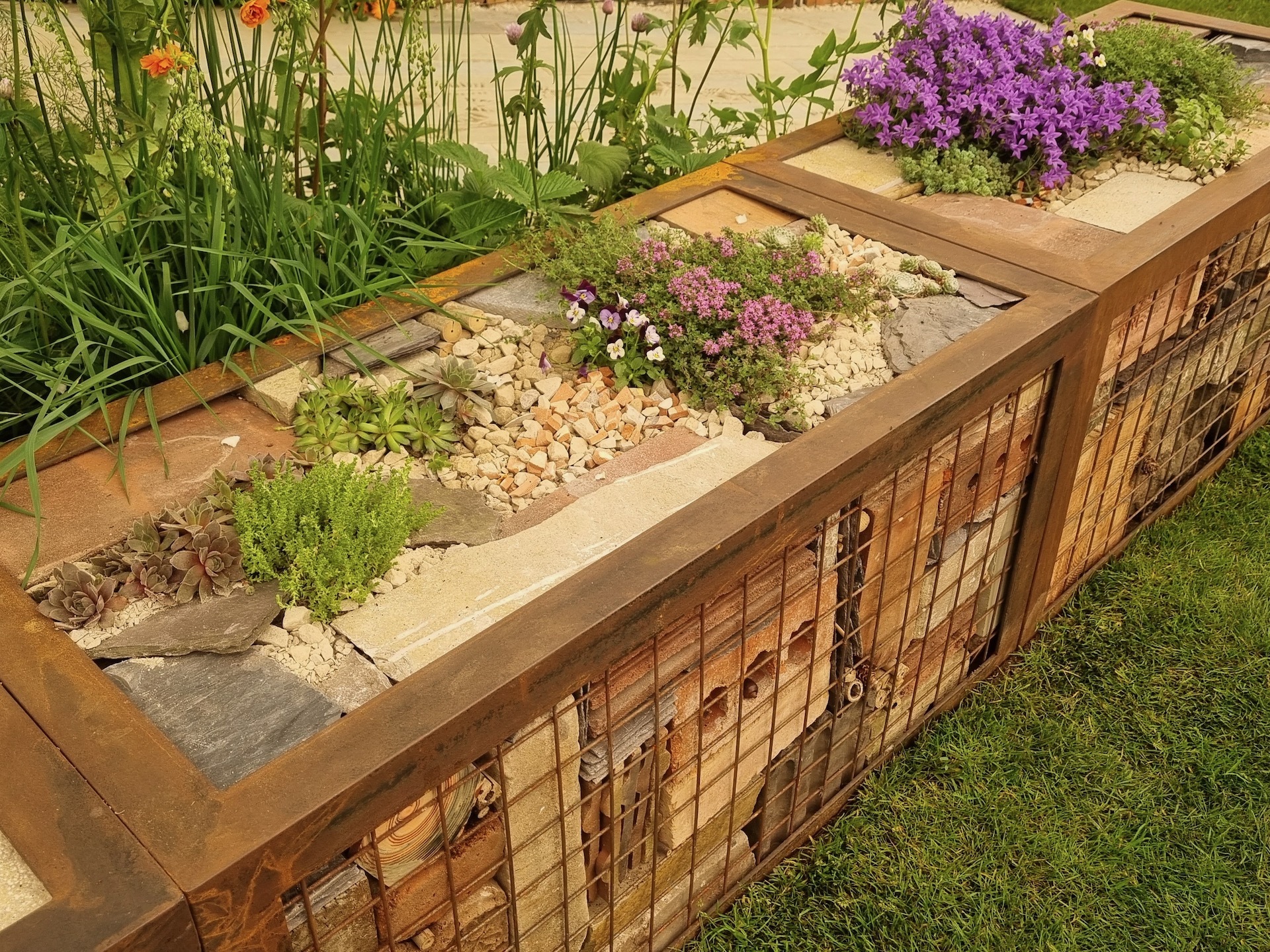
There is a strong theme of recycling in the garden. The gabions have been filled with bricks and off-cuts of York stone from the quarrying and slab making process, as well as artefacts leftover from other stands at the show. The decorative halo and other structures have been bound in recycled fire hose. This symbolises the relationship with Pulp Friction and the Nottingham Fire and Rescue Service.
It truly is a feel-good space and we were thrilled to meet the team on the day. As gardens go, this might be the most joyful of them all.

